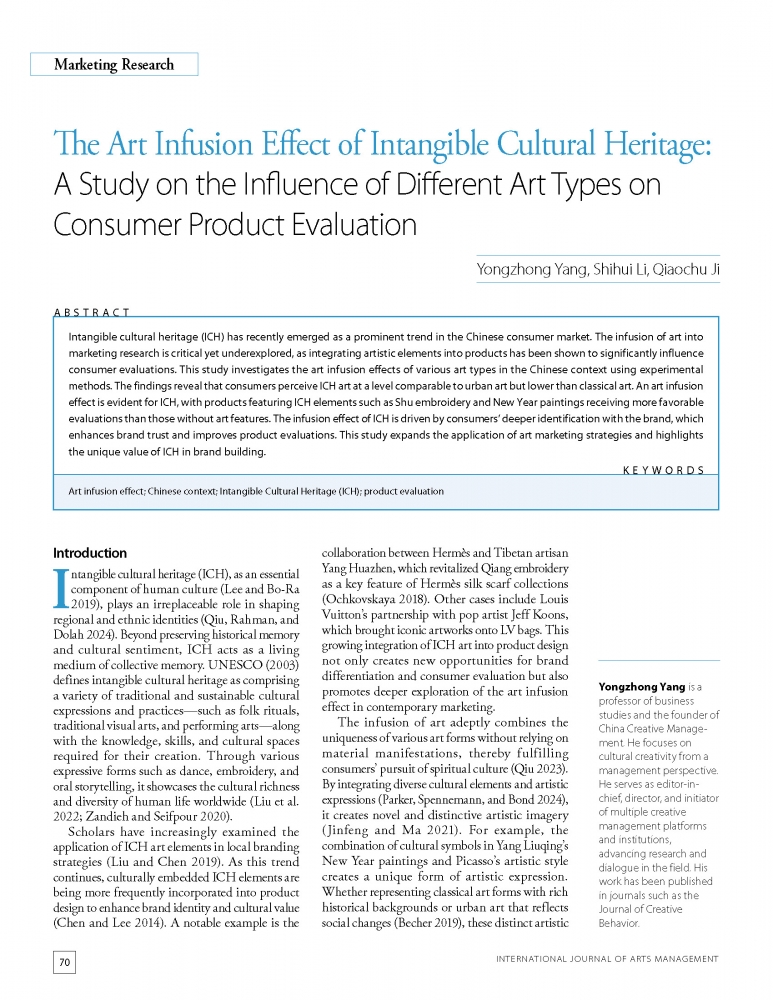The Art Infusion Effect of Intangible Cultural Heritage: A Study on the Influence of Different Art Types on Consumer Product Evaluation
Produit: Article
21,00 $ CA
(disponible en anglais seulement)
Yongzhong Yang, Shihui Li, Qiaochu Ji
Yongzhong Yang is a professor of business studies and the founder of China Creative Management. He focuses on cultural creativity from a management perspective. He serves as editor-in-chief, director, and initiator of multiple creative management platforms and institutions, advancing research and dialogue in the field. His work has been published in journals such as the Journal of Creative Behavior.
Shihui Li is a PhD student at the Business School of Sichuan University. Her research interests include Artificial Intelligence, Social Commerce, Consumer Behavior, Technological Innovation, and Arts Management. She also explores the intersection of technology and art. Her work has been published in journals such as Electronic Markets, Review of Managerial Science, and Telecommunication Systems.
Qiaochu Ji is a master’s student at the Business School of Sichuan University. Her research primarily focuses on arts management, particularly exploring how art can drive innovation, enhance consumer experience, influence branding, and contribute to business strategy and long-term cultural sustainability. Currently, she is exploring ways to integrate art into business practices.
ABSTRACT
Intangible cultural heritage (ICH) has recently emerged as a prominent trend in the Chinese consumer market. The infusion of art into marketing research is critical yet underexplored, as integrating artistic elements into products has been shown to significantly influence consumer evaluations. This study investigates the art infusion effects of various art types in the Chinese context using experimental methods. The findings reveal that consumers perceive ICH art at a level comparable to urban art but lower than classical art. An art infusion effect is evident for ICH, with products featuring ICH elements such as Shu embroidery and New Year paintings receiving more favorable evaluations than those without art features. The infusion effect of ICH is driven by consumers’ deeper identification with the brand, which enhances brand trust and improves product evaluations. This study expands the application of art marketing strategies and highlights the unique value of ICH in brand building.
KEYWORDS
Art infusion effect; Chinese context; Intangible Cultural Heritage (ICH); product evaluation
